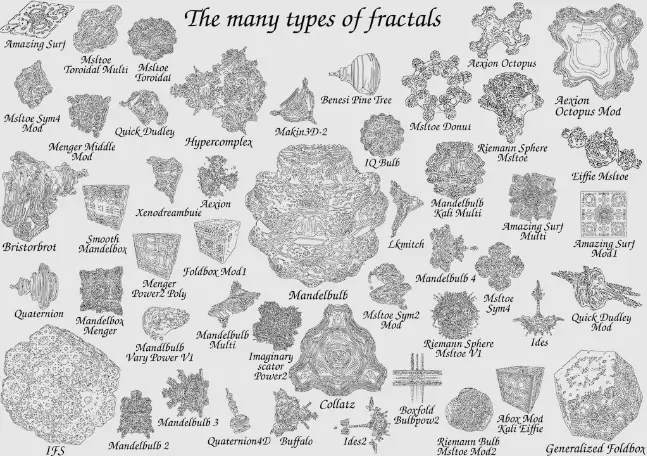Types of Fractals With Examples Structure And Characteristics
What is Fractal?
A fractal is a geometric object with an elementary, fragmented and apparently irregular structure that repeats itself at different scales.
The term was proposed by the mathematician Benoit Mandelbrot in 1975 and derives from the Latin fractus which means fractured or broken!
The main key mathematical property of a fractal object is that its fractal metric dimension is a non-integer rational number.
Fractals Structure
A fractal is an infinite pattern. Fractals are infinitely complex patterns that are self-similar at different scales.

They are created by repeating a simple process over and over again in an ongoing feedback loop. Recursion-driven fractals are images of dynamic systems, images of Chaos.
Geometrically, they exist between the dimensions with which we are familiar. Fractal patterns are very familiar as nature is full of fractals. For example: trees, rivers, coasts, mountains, clouds, shells, hurricanes, etc.
Fractal Geometric Object Characteristics
- They are too irregular to be described in traditional geometric terms.
- Copies are similar in everything, have the same shape, but different sizes.
- It is self-similar, its shape made up of smaller copies of the same figure.

Types of Fractals
Fractals can be divided into:
Linear
These are those generated by linear concepts and algorithms such as lines or triangles. They are obtained using simple geometric lines.
Complicated
These are the ones generated by the escape algorithm. This means that for each point of the fractal a series of values is calculated by repeating the formula until the condition is satisfied. At this point, the stitch is assigned a color associated with the number of repetitions.
Fractals of this type require millions of operations, so they can only be drawn with a computer.
Chaotic orbits
This model derives from the study of chaotic orbits developed by Edward Lorenz in 1963. It has fractal behavior, and although chaos and fractals are not synonymous and behave differently, they have a simple formulation.
Cellular automaton
They were first used by mathematicians John von Neumann and Stanisław Ulam in 1948 to represent the reproduction of some biological systems.
It is a discrete dynamical system, i.e. space and time take on discrete values, whose associated function takes on a finite set of values.
This type of fractal works with simple rules that color areas based on the color of nearby areas.
Plasma
Structures such as plasma or diffusion images depend in part on chance, making them unique and irreplaceable. They are not the result of a deterministic process, but of a completely random process. They consist of a unique and inimitable color pattern.
You May Also Like:
